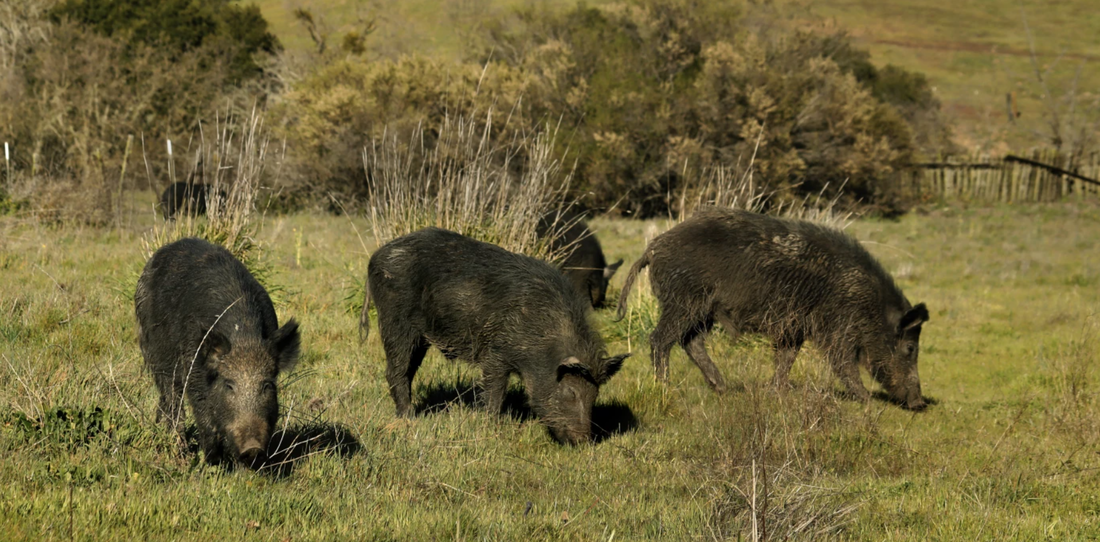Wild boars can be extremely dangerous. The news rarely publishes stories of encounters with them, even though they’re big, have sharp tusks, and are taking over North America. In fact, there have been more fatalities from wild hogs in the last decade than from sharks.
HISTORY AND FACTS ABOUT WILD PIGS
Their range has expanded quickly in recent decades, to 35 states today. Now, wild pigs are one of the most destructive species in the US. They sully entire fields of vegetable crops with E. coli, contaminate drinking water, decimate native wildlife and plant species, and transport more than 50 diseases, including rabies, hepatitis E, and brucellosis, an ugly illness that causes recurring flu-like symptoms. Nearly 40 of the swine-held strains can be transmitted to humans.
At the same time, the species’ population, some 5 million and counting, has skyrocketed, largely because of its high rate of fecundity. Wild pigs can breed several times a year and birth up to 12 piglets per litter, making them the fastest reproductive machines of any animal in their weight and size class. They’re also not predated by any larger carnivorous animals, though cougars will kill one occasionally. On top of that, they’ll eat just about anything.
“I’ve never seen a starving wild pig,” says John Tomecek, assistant professor and extension wildlife specialist at Texas A&M University. Foxes, coyotes, and other wild omnivores, sure, but never pigs. “They are an opportunistic omnivore and will always find a meal,” Tomecek adds.
They’re also not restricted by habitat. they can be found roaming and thriving in just about any terrain, including the desert.
ATTACKS ARE RARE
The good news is that most wild pigs would rather flee to safety rather than charge a human. But much like wild pig numbers themselves, attacks are on the rise. And while wild pigs look a lot like their farm dwelling counterparts, they’re leaner and tougher, with coarser hair and longer tusks. They can weigh up to 350 pounds, be as long as five feet from snout to rump, and run up to 30 miles per hour. They also have excellent vision and are often active after dark, even though they’re not fully nocturnal.
No matter the time of day, your chances of encounter increase while you’re walking a dog, which, according to studies, swine seem to perceive as a threat. Approaching an injured or cornered pig or getting too close to piglets also top the list of things not to do if you’re hoping to avoid a run-in.
WHAT TO DO IN AN ENCOUNTER
When wild pigs do get aggressive, things can turn ugly. The animals tend to charge and maul their victims with their tusks, biting or goring legs and feet. And because they have so much bacteria in their mouths, infection is a serious concern.
To deter an attack upon spotting a hog, give it a wide berth. Often, this is all that’s required to quell a violent encounter. If you see one nearby, it will likely turn tail and make its own speedy escape. If it doesn’t—possibly because it’s never encountered a human or is content to wallow in a cool, muddy creek bed—just put plenty of space between you and the animal. Whatever you do, don’t try to get close to, feed, pet, take photos of, or provoke the animal. Read: If a wild hog wants to protect itself, it’s not letting you get away without a fight.
That said, there are still ways to deescalate the situation. Once the swine starts running toward you, climb a tree, boulder, even a car to get out of the animal’s reach. Try and get high: Pigs can’t climb, but large ones can work their way up a tree trunk with their front legs to reach objects that are several feet above the ground.
If there’s nothing tall nearby, turn tail and sprint. You can’t outrun a wild pig, but in a best-case scenario, they’ll think they’ve neutralized the threat and give up chasing. Use anything at your disposal—a tripod, walking stick, golf club—to fight back. Do your best to stay on your feet because, “if you get knocked down, things get considerably worse real fast."
Whether or not there’s a physical encounter, report the sighting to your local wildlife-management agency so they can trap or euthanize the invasive species.

 RSS Feed
RSS Feed